 W
WKarl Erich Andrée was a German geologist and paleontologist.
 W
WHermann Martin Asmuss was a Baltic German paleozoologist and professor at the Imperial University of Dorpat.
 W
WJohann Jacob Baier was a German physician and naturalist who wrote on the geology and fossils of the Nuremberg area in his book Oryctographia Norica. He considered the Deluge of the Bible to be the only catastrophe to have occurred in earth history.
 W
WGeorg Baur (1859–1898) was a German vertebrate paleontologist and Neo-Lamarckian who studied reptiles of the Galapagos Islands, particularly the Galápagos tortoises, in the 1890s. He is perhaps best known for his subsidence theory of the origin of the Galapagos Islands, where he postulated the islands were the remains of a former landmass, connected to South America via Cocos Island.
 W
WHeinrich Ernst Beyrich was a German palaeontologist.
 W
WJohannes Böhm (1857–1938) was a German geologist and palaeontologist.
 W
WCarl Wilhelm Franz von Branca Until 1895: Wilhelm Branco; 1895-1907: Wilhelm von Branco was a German geologist and paleontologist.
 W
WHeinrich Georg Bronn was a German geologist and paleontologist. He was the first to translate Charles Darwin's On the Origin of Species into German in 1860, although not without introducing his own interpretations, as also a chapter critiquing the work.
 W
WChristian Leopold von Buch, usually cited as Leopold von Buch, was a German geologist and paleontologist born in Stolpe an der Oder and is remembered as one of the most important contributors to geology in the first half of the nineteenth century. His scientific interest was devoted to a broad spectrum of geological topics: volcanism, petrology, fossils, stratigraphy and mountain formation. His most remembered accomplishment is the scientific definition of the Jurassic system.
 W
WCarl Hermann Credner was a German earth scientist and the son of Carl Friedrich Heinrich Credner.
 W
WWilhelm Barnim Dames was a German paleontologist of the Berlin University, who described the first complete specimen of the early bird Archaeopteryx in 1894. This specimen is currently in the Museum für Naturkunde.
 W
WWilhelm Dunker, full name Wilhelm Bernhard Rudolph Hadrian Dunker was a German geologist, paleontologist and zoologist.
 W
WHermann Friedrich Emmrich was a German geologist.
 W
WJohann Gotthelf Fischer von Waldheim was a German and Russian anatomist, entomologist and paleontologist.
 W
WOscar Friedrich von Fraas was a German clergyman, paleontologist and geologist. He was the father of geologist Eberhard Fraas (1862–1915).
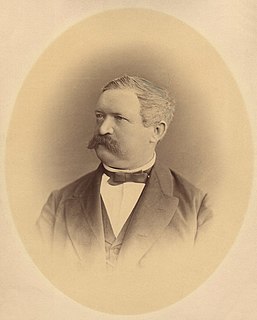 W
WChristoph Gottfried Andreas Giebel was a German zoologist and palaeontologist. He was a professor of zoology at the University of Halle where he managed the zoology collections at the museum. His interests were in systematics and paleontology and he opposed Darwinian evolution. He published several works including Palaozoologie (1846); Fauna der Vorwelt (1847-1856); Deutschlands Petrefacten (1852); Odontographie (1855); Lehrbuch der Zoologie (1857); and Thesaurus ornithologiae (1872-1877).
 W
WGeorg August Goldfuss was a German palaeontologist, zoologist and botanist.
 W
WJohann Heinrich Robert Göppert (help·info) was a German botanist and paleontologist.
 W
WSir Johann Franz Julius von Haast was a German-born New Zealand explorer, geologist, and founder of the Canterbury Museum in Christchurch.
 W
WFranz Martin Hilgendorf was a German zoologist and paleontologist. Hilgendorf's research on fossil snails from the Steinheim crater in the early 1860s became a palaeontological evidence for the theory of evolution published by Charles Darwin in 1859.
 W
WNizar Ibrahim is a US-based German-Moroccan vertebrate paleontologist and comparative anatomist. He is currently an assistant professor at the University of Detroit Mercy. Ibrahim has led several expeditons to Africa's Sahara and is notable for his research on fossil vertebrates from the Kem Kem Group, including pterosaurs, crocodyliforms, and dinosaurs. In recent years, research led by Ibrahim radically changed ideas about the morphology and life habits of one of the largest predatory dinosaurs, Spinosaurus aegyptiacus. Ibrahim also has interests in bioinformatics and contributed to the NSF-funded Phenoscape project. He regularly engages with the public and is a speaker with the National Geographic Speakers Bureau.
 W
WOtto Max Johannes Jaekel was a German paleontologist and geologist.
 W
WWerner Ernst Martin Janensch was a German paleontologist and geologist.
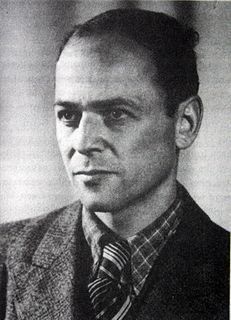 W
WRudolf Kaufmann, son of the physicist Walter Kaufmann, was a palaeontologist and geologist, and is best remembered for his work on allopatric speciation and punctuated equilibrium in the trilobite genus Olenus in the Upper Cambrian of Sweden and on the island of Bornholm. He was a brother-in-law of Curt Teichert, the well-known German-American palaeontologist and geologist. Studying the Upper Cambrian alum shales in Sweden, Kaufmann found that the trilobite genus Olenus occurred in an unbroken sequence of sediments covering a considerable period of geological time. He was thereby in a position to track the phylogenetic evolution of Olenus, that is, the rise and fall of species within the genus and the changes in their morphology. He coined the idea of Artabwandlung, which is the tendency of clade elements in the same environment to show the same morphological trends.
 W
WJohann Jakob von Kaup was a German naturalist. A proponent of natural philosophy, he believed in an innate mathematical order in nature and he attempted biological classifications based on the Quinarian system. Kaup is also known for having coined popular prehistoric taxa like Pterosauria and Machairodus.
 W
WFriedrich Heinrich Emanuel Kayser was a German geologist and palaeontologist, born in Königsberg.
 W
WAlexander Friedrich Michael Lebrecht Nikolaus Arthur Graf von Keyserling was a Baltic German geologist and paleontologist from the Keyserlingk family of Baltic German nobility.
 W
WAdolf von Koenen was a German geologist best remembered for his paleontological research of northern Germany.
 W
WGustav Heinrich Ralph von Koenigswald was a German-Dutch paleontologist and geologist who conducted research on hominins, including Homo erectus. His discoveries and studies of hominid fossils in Java and his studies of other important fossils of south-eastern Asia firmly established his reputation as one of the leading figures of 20th Century paleo-anthropology.
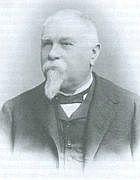 W
WGustav Karl Laube was a Bohemian German geologist and paleontologist.
 W
WTheodor Friedrich Marsson was a German pharmacist and botanist. Marsson was born in Wolgast, Prussian Pomerania, just a year after the Swedish Empire had de-occupied the city, which had been under Swedish control since the Thirty Years' War. He was father-in-law to physiologist Leonard Landois (1837–1902).
 W
WChristian Erich Hermann von Meyer, known as Hermann von Meyer, was a German palaeontologist. He was awarded the 1858 Wollaston medal by the Geological Society of London.
 W
WCarl Albert Oppel was a German paleontologist.
 W
WRodolfo Amando Philippi was a German–Chilean paleontologist and zoologist.
 W
WJosef Felix Pompeckj was a German paleontologist and geologist.
 W
WFriedrich August von Quenstedt, was a German geologist and palaeontologist.
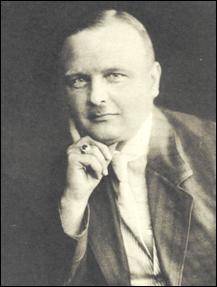 W
WHans Gottfried Reck was a German volcanologist and paleontologist. In 1913 he was the first to discover the ancient skeleton of a human in the Olduvai Gorge, in what is now Tanzania. He collaborated with Louis Leakey in a return expedition to the site in 1931.
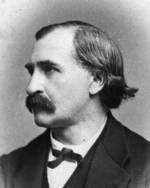 W
WKarl Ludwig Fridolin von Sandberger, German palaeontologist and geologist, was born at Dillenburg, Nassau, on 22 November 1826. He was educated at the universities of Bonn, Heidelberg and Giessen, at the last of which he graduated Ph.D. in 1846. He then studied at the University of Marburg, where he wrote his first essay, Übersicht der geologischen Verhältnisse des Herzogtums Nassau (1847).
 W
WOtto Heinrich Schindewolf was a German paleontologist who studied the evolution of corals and cephalopods.
 W
WErnst Friedrich, Freiherr von Schlotheim, German palaeontologist and politician, was born in Allmenshausen, Schwarzburg-Sondershausen.
 W
WErnst Erhard Friedrich Wilhelm Schmid was a German paleontologist. He was the son of law professor Karl Ernst Schmid (1774–1852).
 W
WAdolf "Dolf" Seilacher was a German palaeontologist who worked in evolutionary and ecological palaeobiology for over 60 years. He is best known for his contributions to the study of trace fossils; constructional morphology and structuralism; biostratinomy, Lagerstätten and the Ediacaran biota.
 W
WMargarethe Lenore Selenka-Heinemann was a German zoologist, anthropologist, feminist and pacifist. She researched apes and led scientific expeditions to the Dutch East Indies.
 W
WSamuel Thomas von Sömmerring was a German physician, anatomist, anthropologist, paleontologist and inventor. Sömmerring discovered the macula in the retina of the human eye. His investigations on the brain and the nervous system, on the sensory organs, on the embryo and its malformations, on the structure of the lungs, etc., made him one of the most important German anatomists.
 W
WErnst Freiherr Stromer von Reichenbach was a German paleontologist. He is best remembered for his expedition to Egypt, which discovered the first known remains of Spinosaurus.
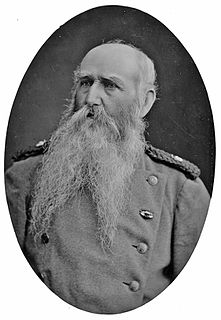 W
WPeter Friedrich Ludwig Tischbein was a German forester, paleontologist and entomologist. His father was the painter Johann Heinrich Wilhelm Tischbein.
 W
WGustav Tornier was a German zoologist and herpetologist.
 W
WGustav Heinrich Ludwig Hermann Trautschold was a German-Russian geologist and paleontologist and also pharmacist. From 1869-1888 he was a professor at the Petrovsky Agricultural and Forestry Academy. Trautschold was known as a specialist in the paleontology and stratigraphy of Carboniferous, Jurassic and Cretaceous deposits of the European part of Russia. He was brother of painter Wilhelm Trautschold.
 W
WJohann Andreas Wagner was a German palaeontologist, zoologist and archaeologist who wrote several important works on palaeontology.
 W
WKarl Alfred Ritter von Zittel was a German palaeontologist best known for his Handbuch der Palaeontologie (1876-1880).